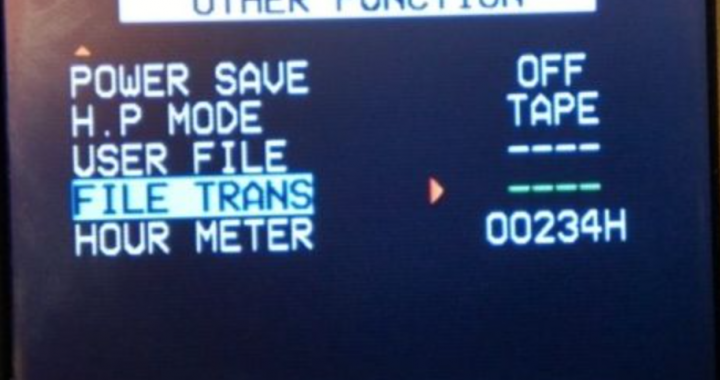The number one question people ask us about our cameras is how many hours are on them. More and more it matters less and less. The hour meter was made popular with cameras that required some form of regular maintenance. Either cleaning and adjustment of the tape transport, cleaning of the heads, replacement of the drum, etc but as cameras transition into mostly solid state media the hour meter becomes less relevant. We’re not suggesting you ignore it but don’t use it as your sole deciding factor on making a purchase.
Not consistent
Whether or not a camera needs work is affected by how it’s used just as much as how much it’s used. Looking at a camera’s hours is often a poor indicator of whether or not the camera is going to be trouble-free or not. We’ve had cameras with 50 hours come in with bad heads and cameras with 1500 hours come in working like a champ. An hour meter is not a good barometer of a camera’s condition with two exceptions:
- If hours are very low the likelihood of component failure is also statistically lower.
- If hours are very high (several thousand) the likelihood of component failure is statistically higher.
For anything else, if you’re choosing between a camera that looks nice and has higher hours or a camera that looks rough but has low hours we’d suggest going with the higher hour unit. A high hour camera that has been properly maintained is better than a low hour camera that hasn’t been touched.
Not relevant
Hour meters are a relic from a time past, a time when after a certain amount of hours you’d need to clean your heads or have your tape transport cleaned. As we make the transition into solid state media like SDHC, P2, SXS and CF one of the most common failure points of a pro camera is eliminated. The most complex component of the camera, the one most delicate and likely to break – the tape transport – is eliminated. No cleaning heads, no replacing the drum, no capstan motors or anything of the like. Cameras essentially become maintenance-free. You use it until something breaks and then you fix it.
When to pay attention to hours
When buying any kind of camera that uses a physical medium such as tape or bluray disc (such as XDCAM) but still, a well treated camera with 800 hours is more desirable than a rough camera with 100 hours. On average most manufacturers suggest replacing the drum at 1500 hours and even though most drums go well past that point without ever showing any kind of signs of failure, avoiding a very high hour camera is a wise move when possible.
When to ignore hours
On basically any semi-pro camera that records to solid-state media such as P2, SXS, SDHC, CF Card, etc. The amount of returns we see from solid state cameras is nearly nothing and we have no hesitation recommending a 1000 hour camera to someone with the expectation that it still has years of service in it.
Questions? Comments? Want to tell us how wrong we are or give us a high five for saying what you’ve been saying for years now? Email us! Sales@monkeedeals.com or Call Us! 855-942-FILM (3456)
